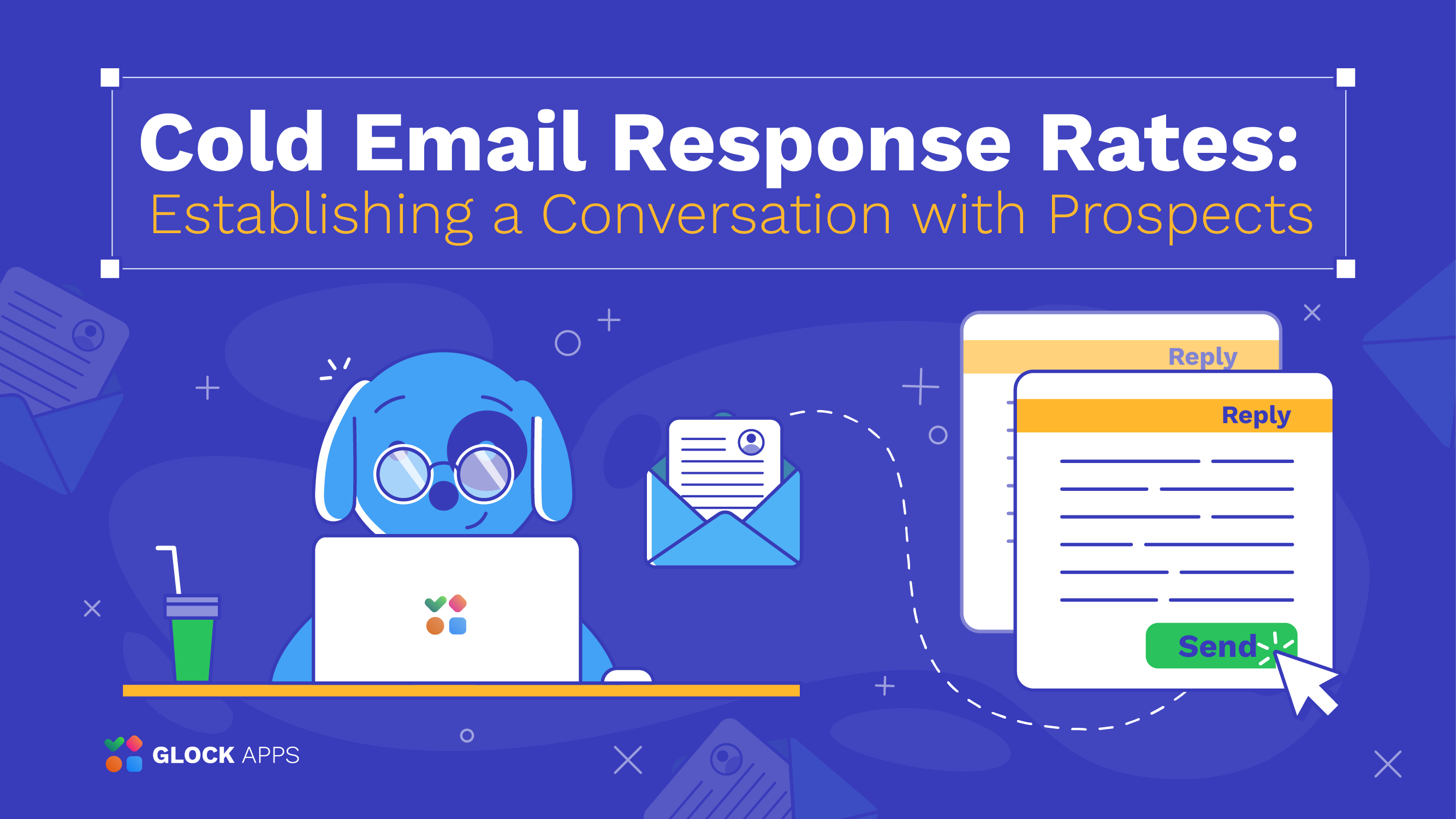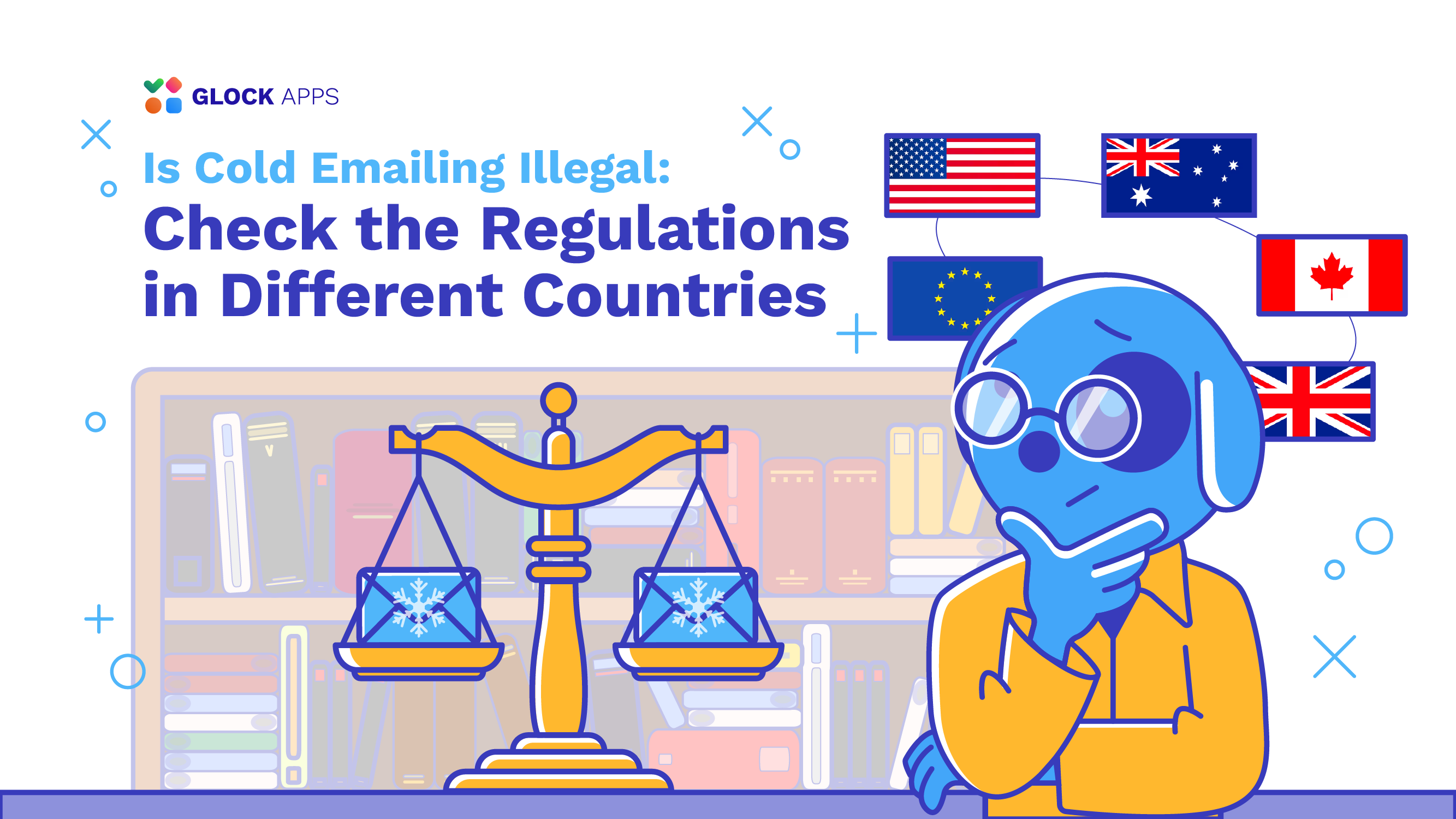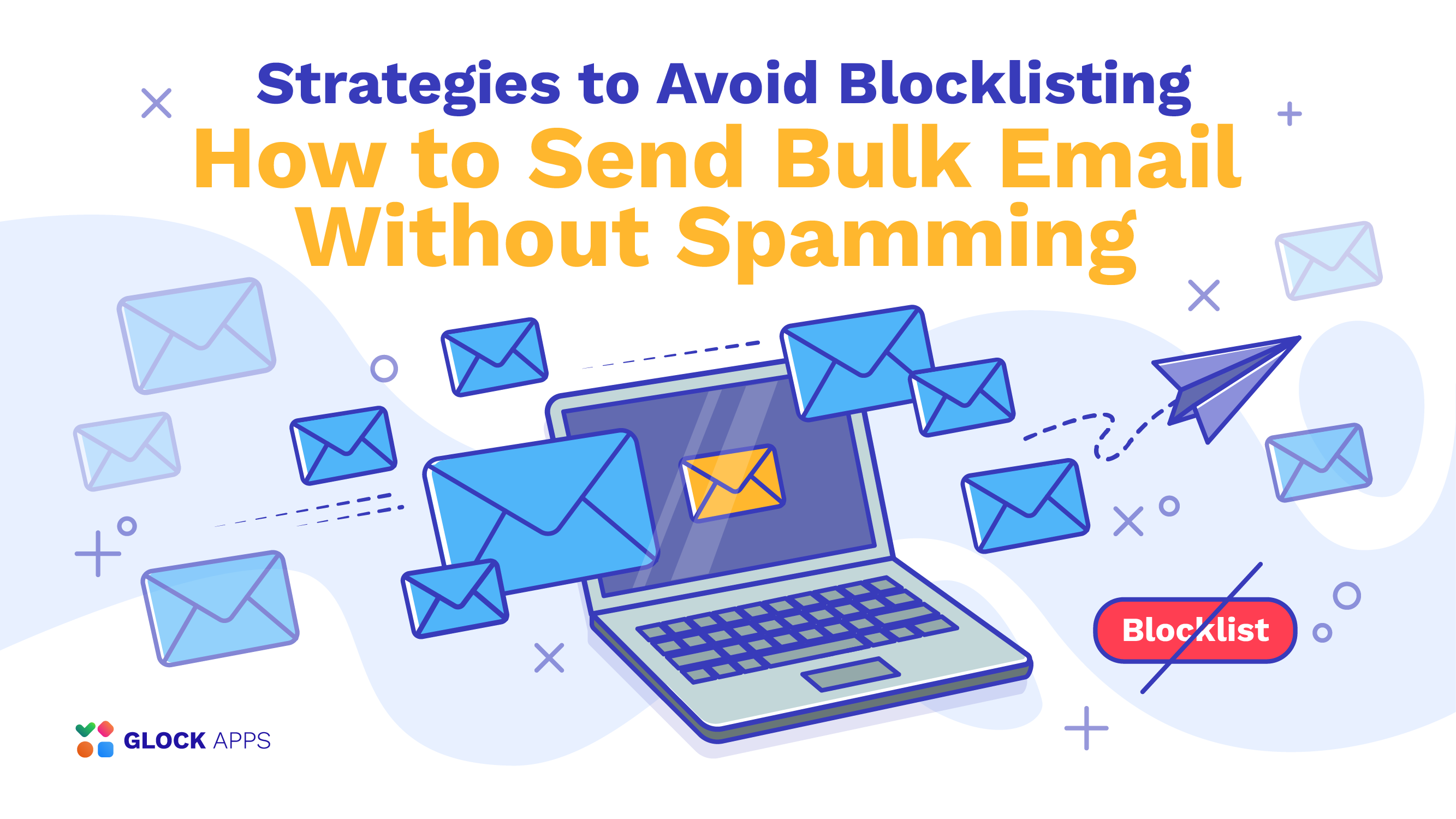How to Write a Perfect Cold Email: Tips and Tricks
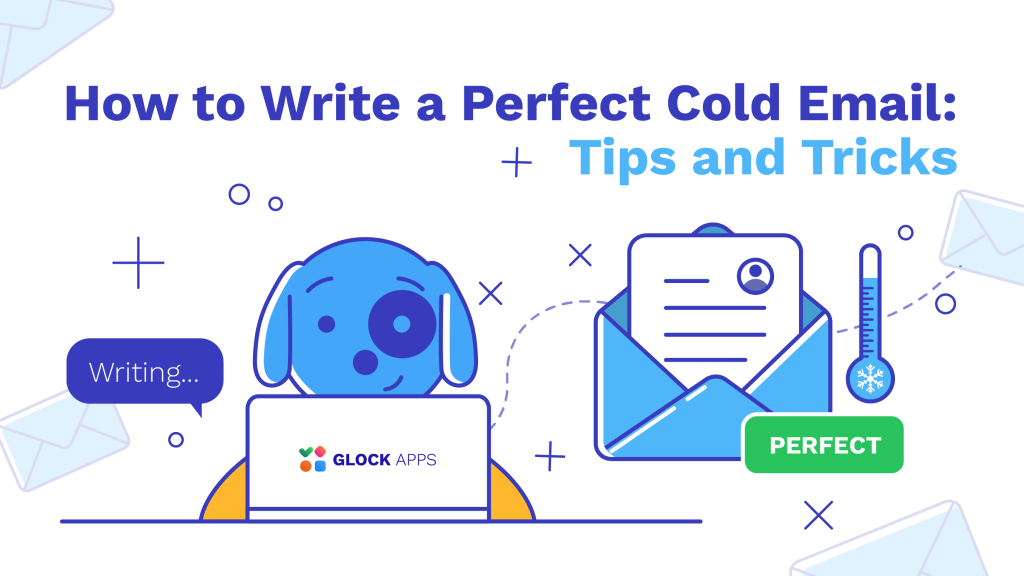
Table of contents
How to Write Cold Emails That Work: Simple Steps for Success
Do cold emails still work? Absolutely – but only if you write them correctly.
Crafting a cold email may seem simple to those who have never attempted it. However, the reality is quite different. It poses challenges for various reasons, particularly because it demands important consideration of various factors throughout the writing process.
Cold emails have different uses in business. One common use is reaching out to potential customers who might be interested in your product or service. It’s like saying: “Hey, we have something you might like!”. Sending cold emails remains one of the most effective ways to generate leads.
Another use is connecting with people in special industries for partnership. Cold mail is a great tool for expanding your professional network. Cold emailing can also be handy for job seekers to contact potential employers. In simple terms, it’s a way to start conversations with new people for various reasons, like selling, collaborating, or exploring job opportunities.
In this article, we will walk through simple but effective steps to help you write compelling cold emails that not only capture attention but also initiate the recipient’s action.
Writing a Cold Email: Tips and Tricks
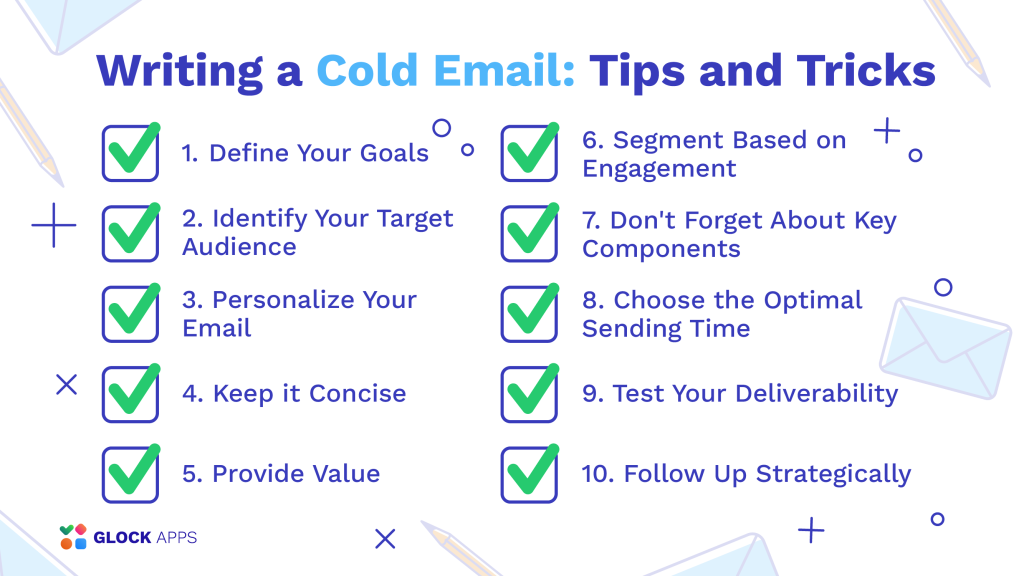
1. Define Your Goals.
Before diving into crafting your email, take the time to define the goals you wish to achieve, whether it’s lead generation, product or service promotion, meeting bookings, candidate outreach, or link building.
Identifying your objectives goes beyond your personal aspirations, it’s more about understanding the value you provide to your recipients, which creates a win-win situation and builds lasting relationships.
Having well-defined goals not only shapes the direction of your email but also serves as a strategic guide for content creation that provides clarity on what details to include in the message when writing your cold email.
2. Identify Your Target Audience.
Here lies the key distinction between effective email outreach and spam: understanding our recipients. Ensure you research your prospects before hitting the keyboard, and take the time to understand them. Carefully research the needs, challenges, and interests of your target audience. Customizing your message so that it resonates with your potential customers increases the likelihood of attracting their attention and further conversion.
3. Personalize Your Email.
Personalization means the extra work that will make your cold emails more effective and relevant to the recipient. Marketers noticed that personalization can increase cold email open rates by up to 50% — this is logical because the reason why it works is so perfectly simple.
Start your email with a personalized greeting. Use the recipient’s name and consider including a brief reference to their work or achievements. This small touch demonstrates that your email is not a generic mass message.
The unique sense conveys the feeling that the email was created just for them, increasing their interest in the content. Moreover, personalized messages build trust and increase the likelihood that they will not only be opened and read but also lead to action.
4. Keep it Concise.
Recipients don’t have much time to read complex texts. It might sound a bit boring, but it’s crucial. Long emails don’t work. Most people don’t read them, especially when they’re from strangers. Short and simple but actionable messages usually get the best result.
From start to finish, your message must be logical and make sense. Always clarify to the recipient why you’re reaching out, what you’re offering, and the other points. Every part of the letter must logically align. Any hint that something’s off could lead the recipient to delete our message. To make this purpose easier, use a free text summarizer that condenses lengthy drafts into clear and concise emails.
There are many perfect cold email templates you can use online as a base of your message, just adapt them for your target audience and their specific needs. But keep in mind that it is believed an ideal cold email spans approximately 100 to 125 words, with an upper limit of 200 words.
5. Provide Value.
Deliver value in every email. For a meaningful response, ensure that your introduction and pitch are appropriate to the prospect. If you offer a solution, make sure it addresses a problem they might have.
Emphasize your core benefits, not only features, and always let your readers know what’s in your offer just for them. A reply is more likely when they see the potential gains from initiating a relationship with you.
6. Segment Based on Engagement.
Segmenting your recipients according to their engagement levels is a game-changer. In addition to engagement, consider grouping them based on their interests and challenges. This approach simplifies crafting tailored content for each group, effectively addressing their unique needs.
For businesses, aligning your offers with client concerns elevates relevance. This not only positively impacts your campaign but also results in higher conversion rates, increased trust, client loyalty, and positive word-of-mouth.
7. Don’t Forget About Key Components.
When creating a compelling cold email, consider these 5 vital components:
The Subject Line: Your first impression, so make it impactful! Craft a short, attention-grabbing subject line that aligns with your email content. Always ask yourself first, “What’s in it for my customer?” Ensure that you meet their needs and resonate with them.
A subject line lacking clarity or impact could lead the recipient to form negative opinions about the sender. This might result in them choosing not to open the email or, in more severe cases, manually marking it as spam, which may cause issues with email deliverability. But avoid sounding too formal and robot-like, include a sense of friendliness and compassion in your cold email sample.
The Introduction: Set the tone with an engaging introduction explaining your outreach’s purpose. After grabbing your recipient’s attention with enticing ‘from’ and subject lines, you have just 2-3 seconds to keep them engaged. This is where an intriguing introduction has to play a role.
Starting a cold email is tricky. Often, we make the mistake of focusing on ourselves or our company, either because we’re unsure how to begin or are eager to close the deal with the first email, but this strategy is far from effective.
The Body: Provide detailed but concise information about your value proposition, product, or service, emphasizing how it addresses the prospect’s needs.
Remember, that you are writing to build the foundation of a new business relationship with a potential customer. But if you come across as too promotional, it might give your readers a bit of a “chilly vibe” literally, so keep it warm and friendly instead.
The CTA (Call-to-Action): Clearly state what you want your prospect to do next. Convince your potential customers in a way that encourages them to align with your ultimate goal.
A good cold email example must have specific, encouraging, and action-oriented CTAs, but no more than 1 per email.
The Ending/Signature: Include your contact details, professional headshot, and relevant links in your email signature, providing a professional closure to your message. Always write your official name and avoid using nicknames.
You aim to establish a genuine human connection with recipients through cold emails. By adding personal details to your email signature, you initiate this relationship with transparency and honesty. A good email signature builds brand awareness, reminds customers that you are a real person, and makes it easy to get in touch with you.
8. Choose the Optimal Sending Time.
Email marketers always wonder how to send cold emails correctly. Timing plays a crucial role, especially in cold email outreach. You want your message to stand out, not get lost in the shuffle, so pinpointing the best time is essential.
It was reported that a survey of over 150+ marketing and advertising professionals in the U.S. indicated that the majority observed the highest engagement for their cold email marketing between 9 AM to 12 PM and 12 PM to 3 PM. For the best days, aim for Tuesday, Wednesday, and Thursday. These days are often more effective, considering the Monday blues and the pre-weekend mindset on Fridays.
There are a lot of marketing automation tools to help you schedule your cold email outreach. Automation software saves time, reduces the workload, analyzes performance, optimizes efforts, and ensures systematic and scalable communication with your audience.
9. Test Your Deliverability.
Conducting automatic deliverability tests is crucial for cold email outreach. These tests assess the likelihood of your cold emails reaching the recipient’s inbox instead of being flagged as spam. Ensuring high deliverability rates is vital for the success of your campaigns, as letters landing in the inbox have a greater chance of being opened and engaged with.
GlockApps Inbox Insight testing tool offers a quick solution. With our automatic tests, you’ll be notified if the Inbox placement rate falls below a set threshold, allowing you to fix deliverability issues proactively. Regular spam tests help you identify potential issues early on, maintaining the effectiveness of your efforts and preserving the reputation of your sending domain.
10. Follow Up Strategically.
Even perfectly written cold emails may not be enough to engage prospects. Often, recipients simply miss your message, forget to reply, or just don’t feel like setting up the call. This is entirely normal. That’s why consistent follow-ups are key.
While one follow-up email is a necessity in your cold email strategy, the optimal number is 1 or 3. But these follow-ups shouldn’t just serve as reminders so that you can give some more value. Include links to intriguing case studies or extend invitations to upcoming webinars to enhance the prospect’s interest.
Automation software can easily schedule follow-up emails based on your recipients’ behavior. This ensures that you stay on top of your outreach efforts and maintain consistent communication with potential clients.
Learn more:
5 Cold Email Trends to Nail Your Outreach Campaigns
Cold Email Open Rates: Assessing the Effectiveness of Your Outreach Campaigns
Cold Email Conversion Rates: Effective Tactics to Boost Your Sales
Closing Thoughts
Remember, cold emails aren’t just about selling, they’re about starting conversations, providing value, and building relationships. Stay flexible, constantly test and refine your approach, and most importantly, focus on connecting with your recipients. With these principles in mind and following our simple tips and tricks, your cold email outreach can become a powerful tool for the growth and success of your endeavors.

